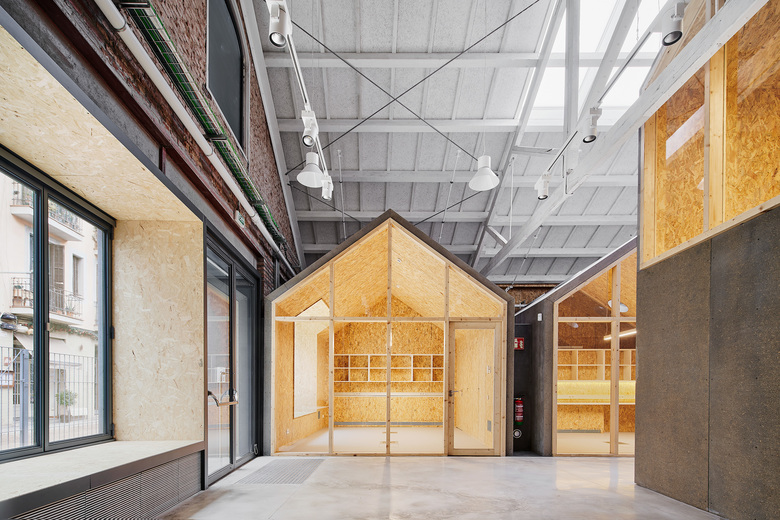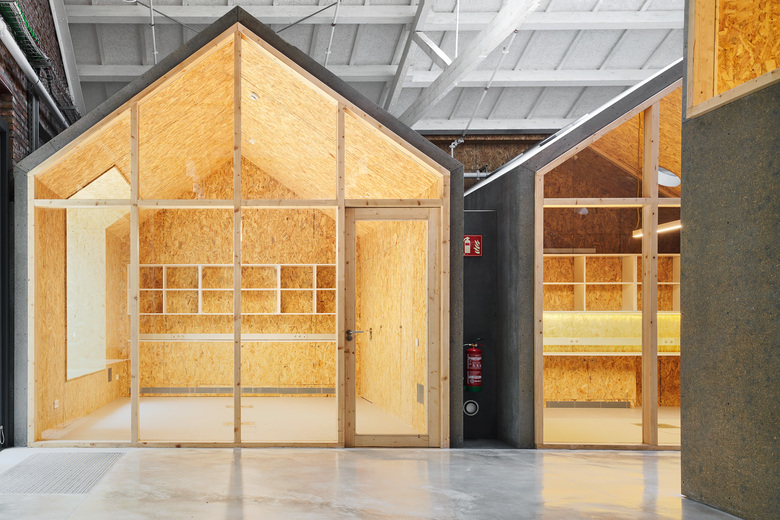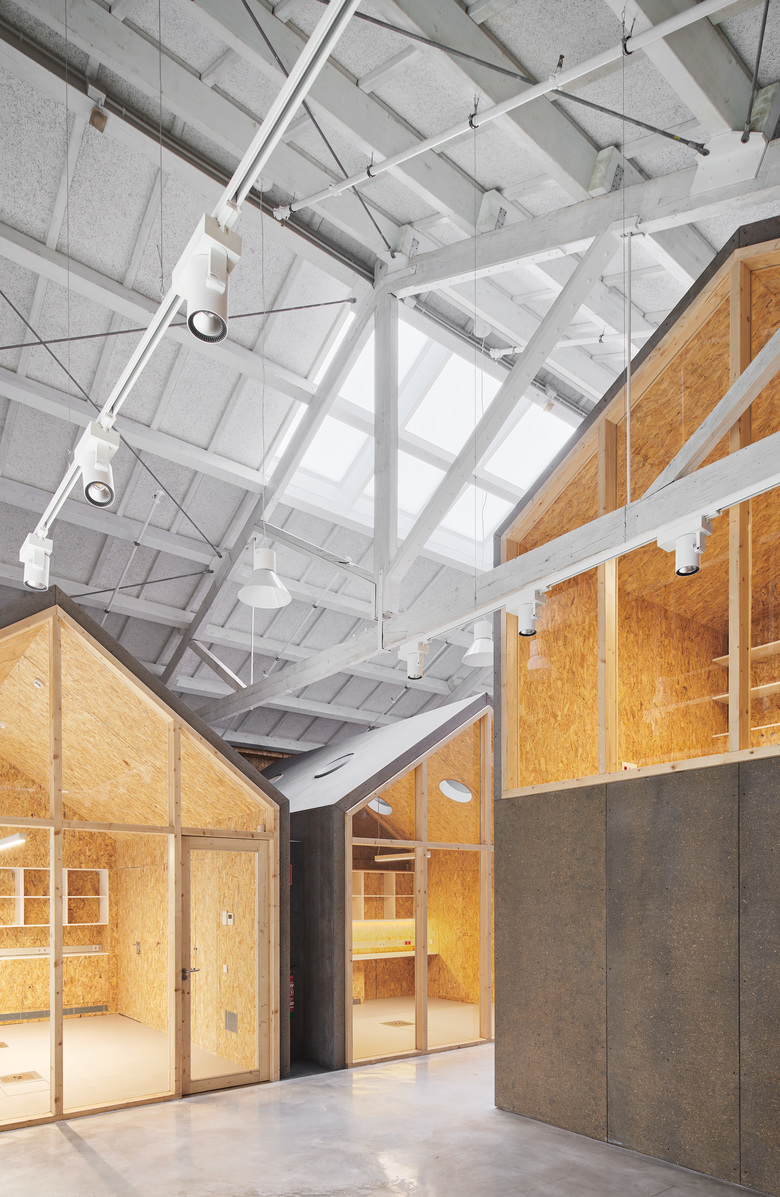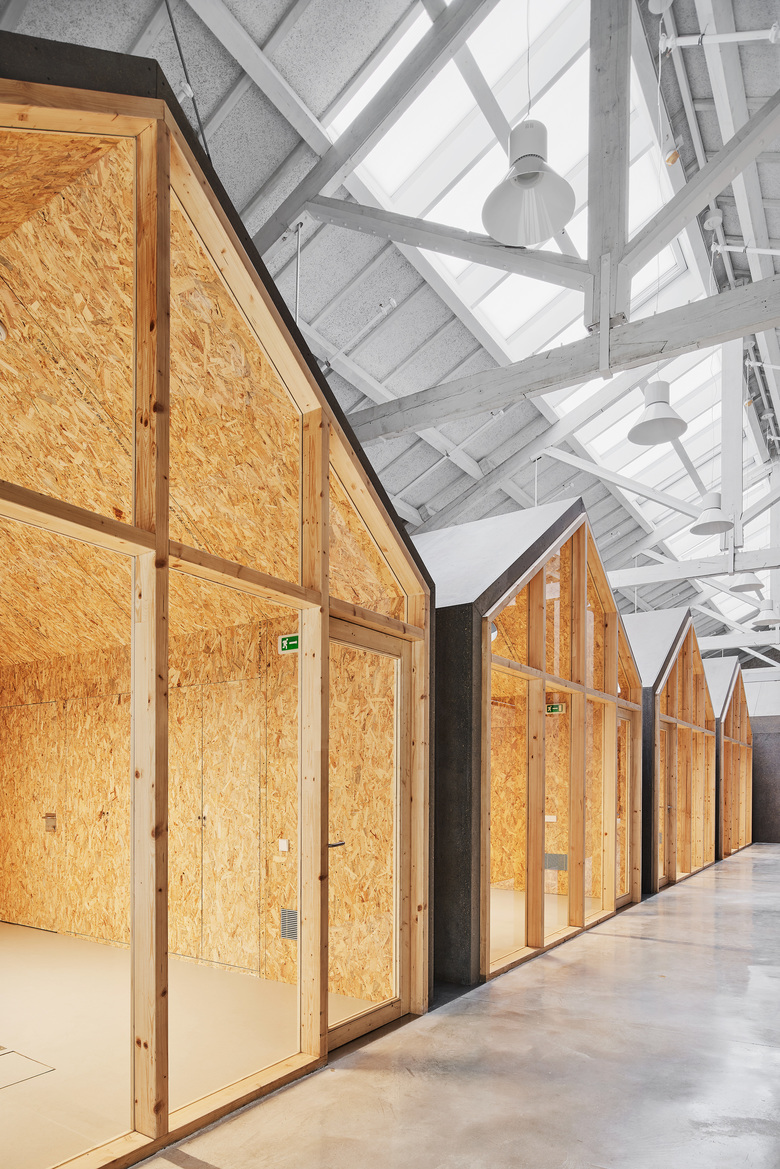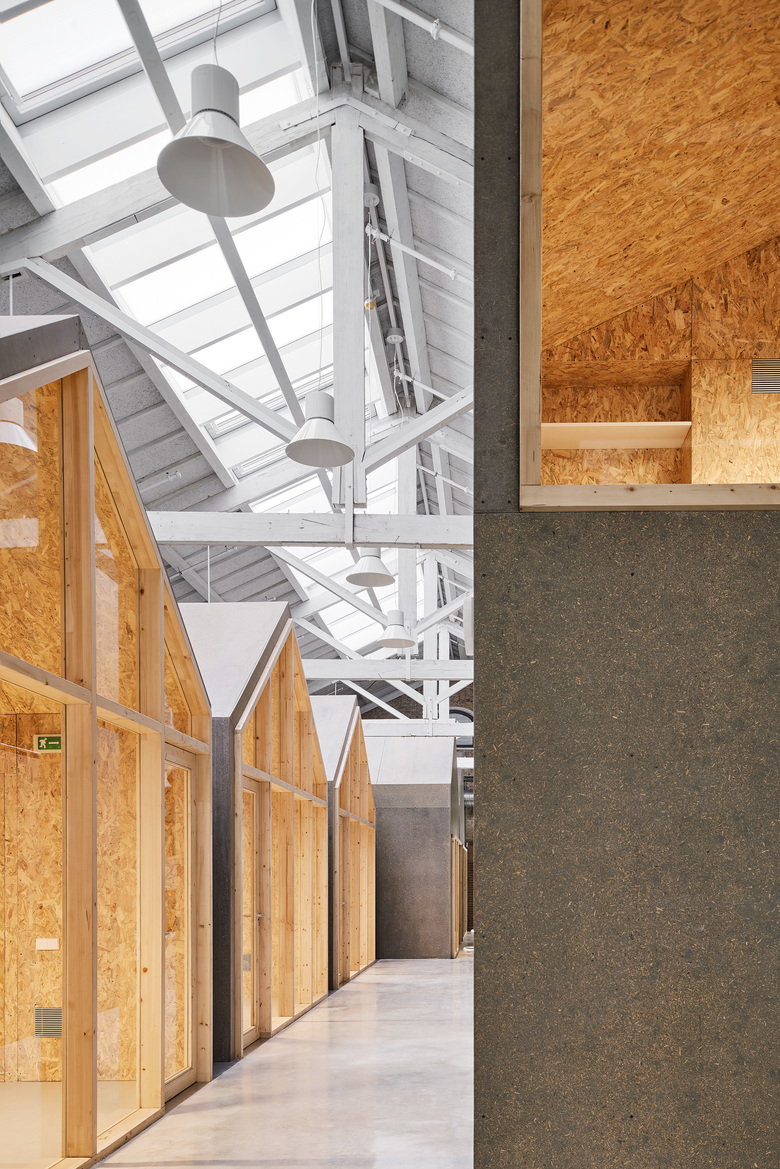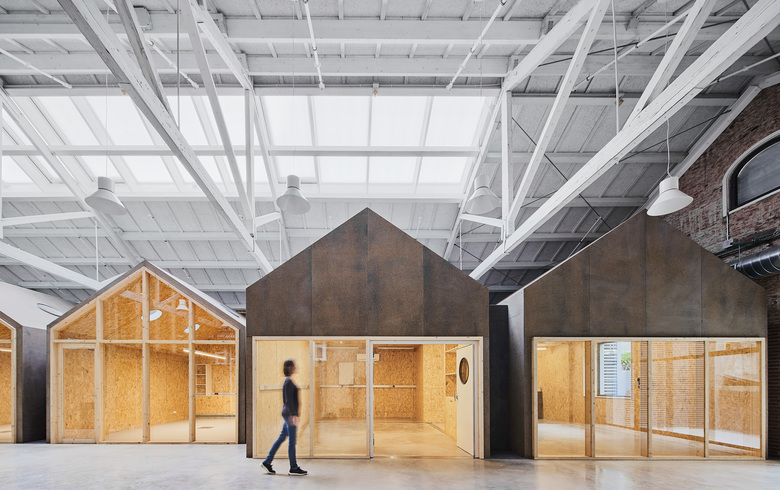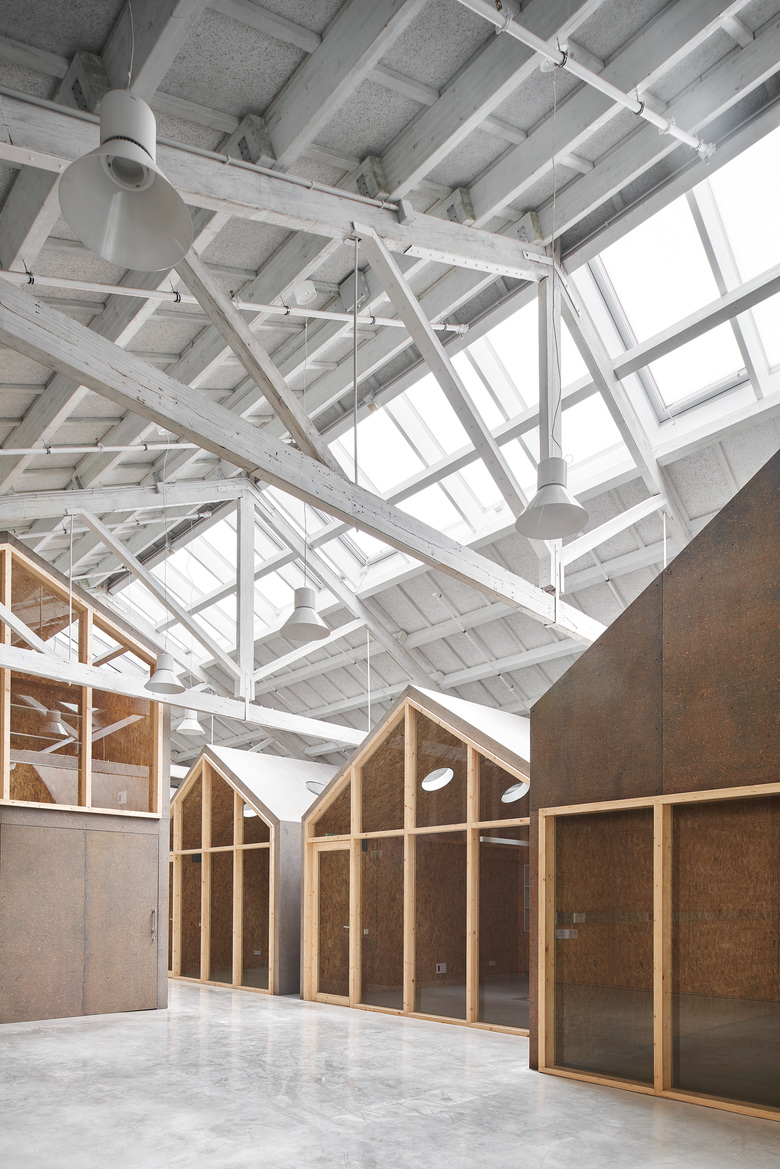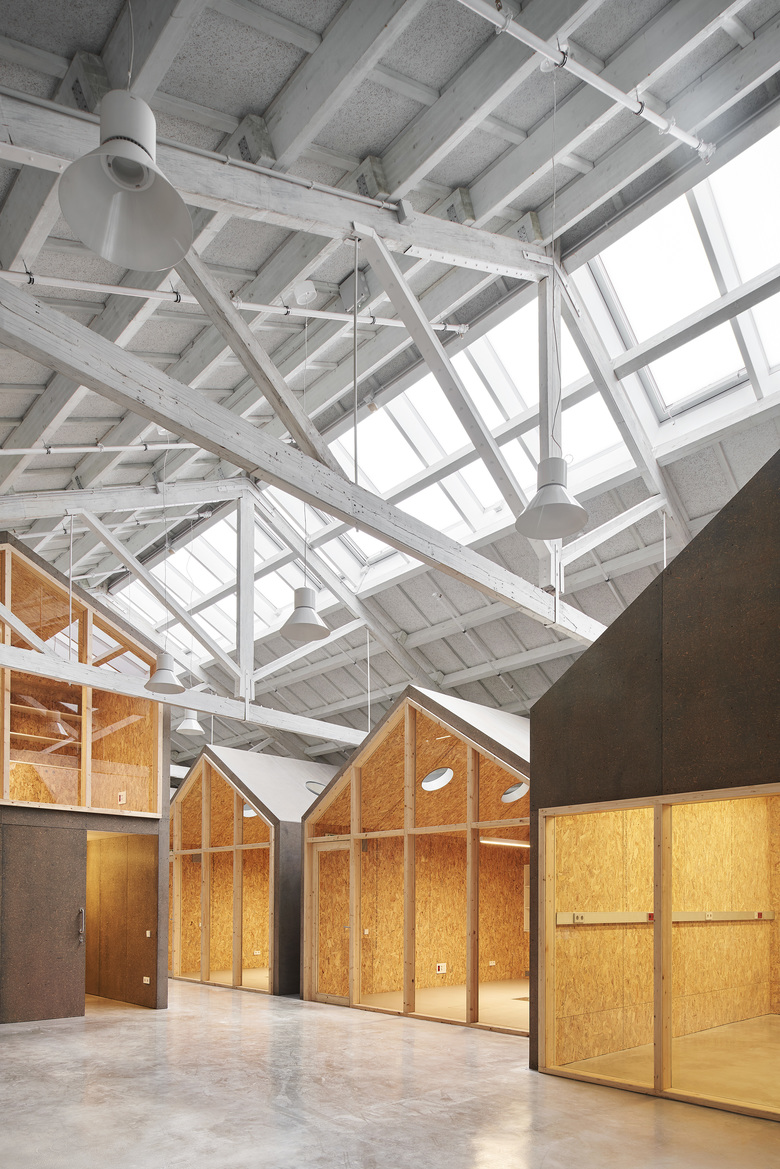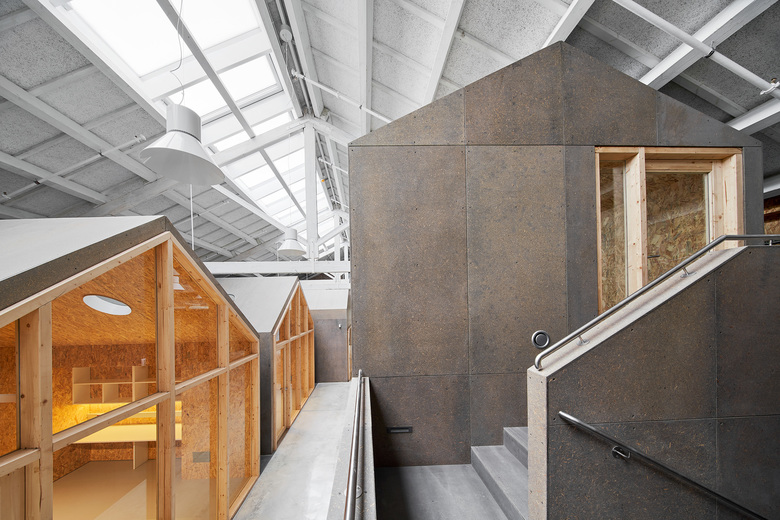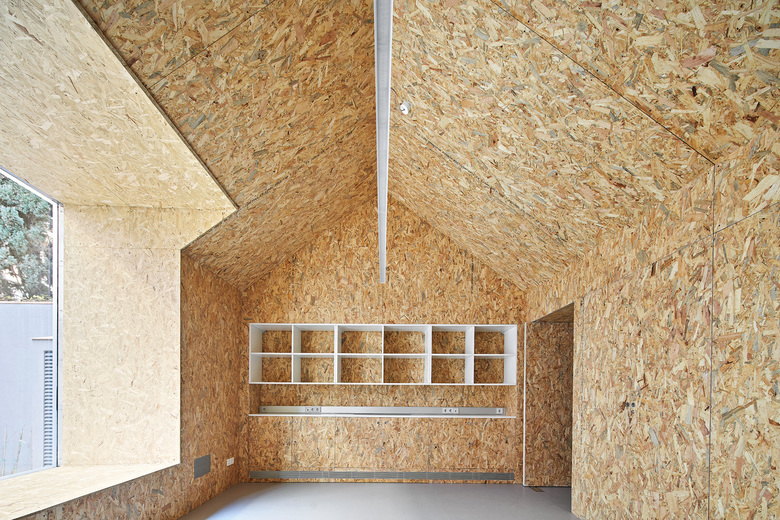Ateneu de Fabricació de Gràcia
Barcelona, Spain
- Exhibition Halls + Showrooms
- Conversions + Extensions
- Lofts + Interiors
- Cultural Centers
- Technology Centers
- Workshops
- Architects
- Oliveras Boix Arquitectes
- Location
- Perill, 8, 08012 Barcelona, Spain
- Year
- 2018
The aim of the intervention is the integral renovation of an old warehouse located in the old quarter of the Gràcia neighborhood, in Barcelona, for its transformation into an “Ateneu de Fabricació” (Fabrication Athenaeum). This is a new equipment based on the FabLab model, which makes available to the public the new digital manufacturing tools and the necessary training for the development of prototypes and personal projects. The “Ateneus” have a basic function of training and social innovation aimed at the general public, and also develop pedagogical programs focused on schools and families.
The factory, built around 1910, hosted different industries during its life: limes, cookies, graphic arts, among others ... Before the intervention it was in disuse. The most remarkable element of the original construction were the wood trusses that supported the gable roof of the warehouse, characterizing its interior spatiality.
The functional program of the new equipment consisted of several workshops for the use of both diverse digital and conventional machinery (3D printers, CNC milling machines, laser cutters, etc.), and a series of small workspaces dedicated to management and training. Finally the "agora", a large open and flexible space for the realization of open format creative and informative activities.
OBJECTIVES
The first objective was to maintain the perception of the warehouse diaphanous space and its character, mainly defined by the timber structure that supported the roof.
Another very important, was to obtain spaces that allowed a flexible use, optimizing to the maximum the available surface, which was limited.
Finally, achieve maximum efficiency and sustainability of the intervention through the reduction of energy demand and consumption and also minimizing the ecological footprint derived from the materials and systems used in the construction process.
DESCRIPTION OF THE INTERVENTION
Renovation of the existing wood structure
In order to maintain the perception of the open space of the original warehouse and its character, it has been decided to preserve and restore the existing wooden trusses by making steel reinforcements where necessary. Raftens and battens have been replaced by new elements of laminated wood, keeping the rhythms and aesthetics of the traditional construction system.
The fiber cement roof has been replaced by a new sandwich panel with a lower sound absorbing finish based on wood shavings. Through the opening of a new skylight the entrance of light from north that floods the whole space is enhanced.
Wooden self-supporting modules
The creation of the different spaces defined by the program has been resolved through a series of self-supporting modules entirely built in wood. The frames, made of fir wood, are clad both inside and outside with wooden boards. The interior of these structures has been filled with mineral wool thermal insulation.
The cabins have been executed completely dry. After a careful process of 3D modeling, the cutting and assembly plans have been generated. The frames have been built in a workshop and assembled on site.
This "Box in box" strategy, through modules that do not contact the main space roof, allows the perception of the entire space of the old warehouse and the clean vision of the pre-existing timber structure. The geometry of the modules in the manner of a “cottage” recalls that of the main building and enriches the interior experience, adding breadth and quality to the work spaces. Inside the modules, some skylights allow the vision of the old roof and the entrance of natural light.
The use of wood provides warmth while establishing a dialogue with the concepts Fab Lab and DIY (Do It Yourself). Oriented chipboards (OSB) have been used for the interior coating of the modules. For the exterior, wood / cement particleboard panels in black with a sanding finish have been chosen, seeking the contrast with the predominant white in the rest of the space.
Energy efficiency and passive systems
The new equipment has an energy classification A with a consumption of only 53 kWh / m2 year. Through the following strategies, the demand and consumption have been reduced to the minimum:
- The isolation of the entire enclosure has been prioritized: roof, facades, interior cabins.
- Reduction of the volumes to be heated through the "Box in Box" strategy.
- Betting on natural ventilation through the motorization of the skylight and the front windows. Control through the management system (40% reduction in refrigeration consumption).
- Very low consumption systems. Maximum heat recovery.
- Maximum use of natural light (skylight).
Reduction of the ecological footprint materials
- Rehabilitation of the original wooden structure. Reduction of waste generated.
- New self-supporting cabins built entirely in wood and wood by-products: renewable material, with FSC certificate.
- Prioritization of natural, renewable, recyclable materials, with environmental statement: linoleum floors, steel exterior joinery, etc.
Related Projects
Magazine
-
Green Over Gray
Today
-
Life of Pei
1 day ago
-
OMA Does Dior
2 days ago
-
With Proper Maintenance
2 days ago
-
Domino Sugary Refinery
2 days ago

